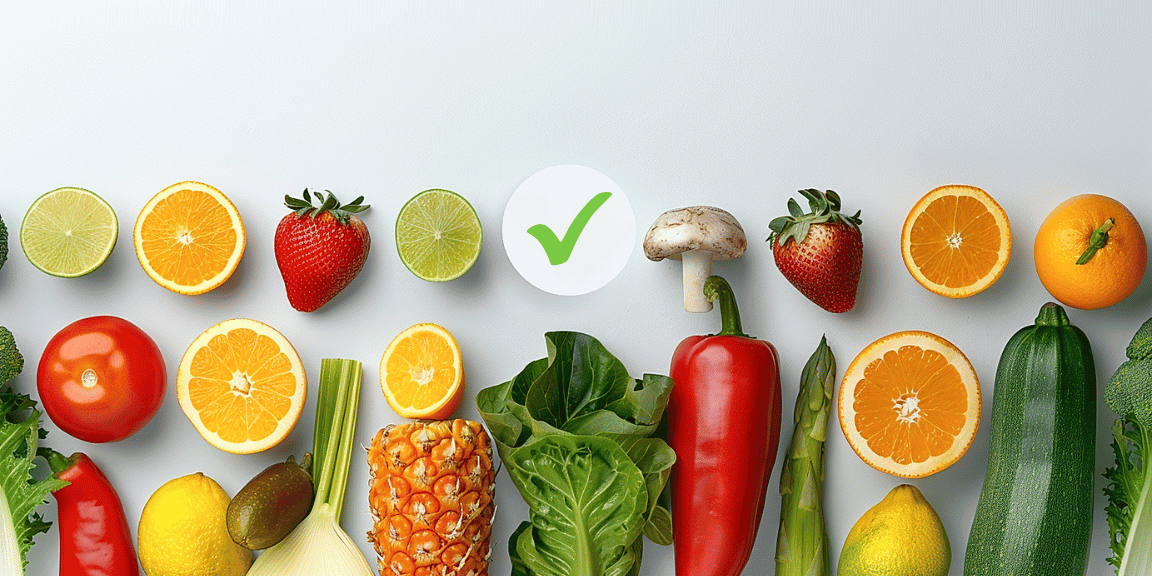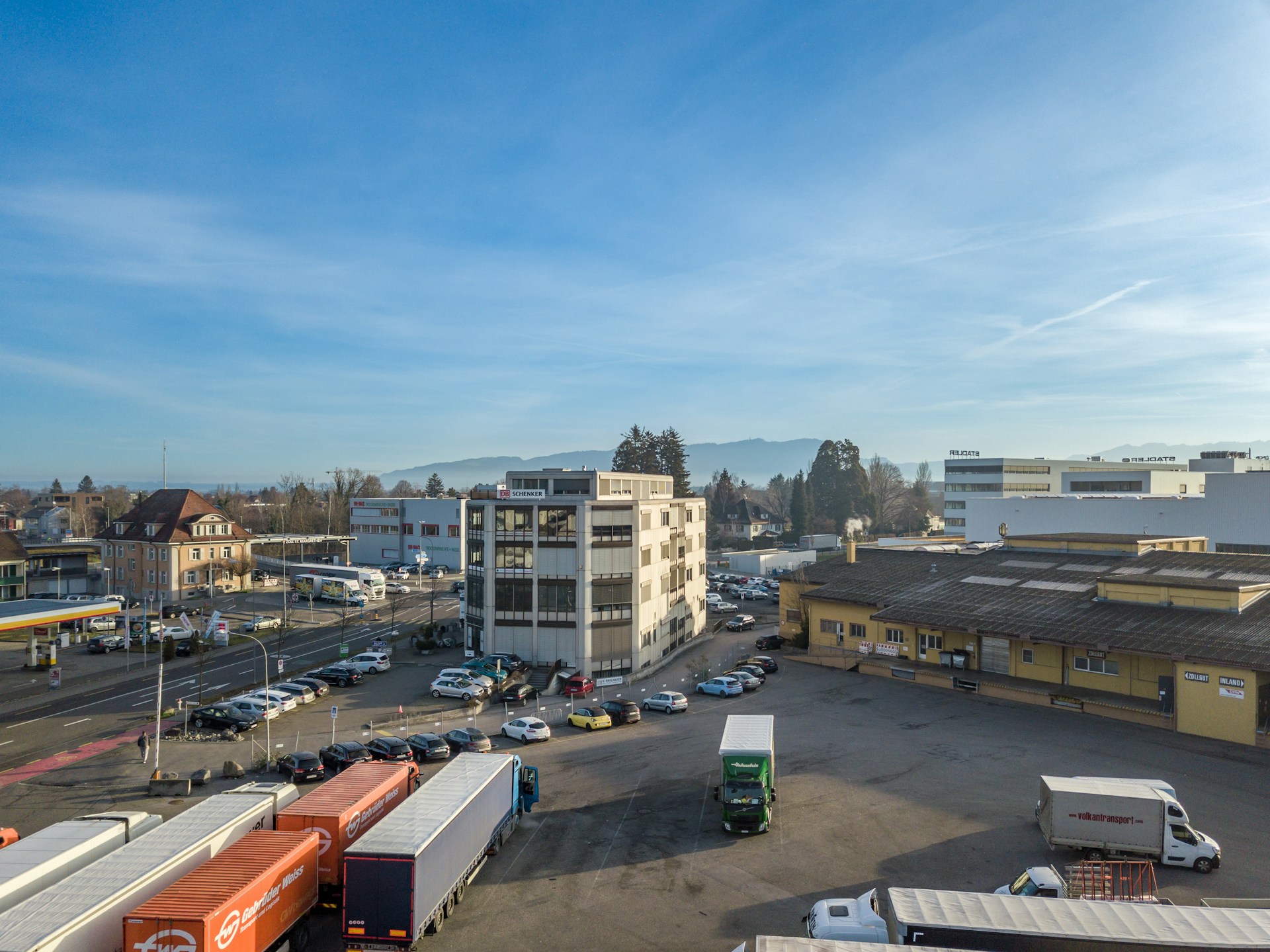In an increasingly digitized era, there are remarkable developments in the technology sector that are streamlining complex processes within various industries.
Produce distribution is one such sector that is reaping the benefits of emerging tech solutions.
Notably, these advancements are paving the way for improved compliance measures.
Strict adherence to regulations, particularly in the handling and distribution of produce, is critical for ensuring product safety and quality.
Innovative technologies are enabling improved oversight, accuracy, and efficiency in meeting these stringent standards.
In this blog post, we will delve into the specific technologies that are bolstering compliance in produce distribution.
Contents
- Tech Advancements Aiding Compliance In Produce Distribution
- 1. Blockchain for transparent supply chain tracking
- 2. IoT Devices for Real-Time Condition Monitoring
- 3. AI for Optimum Logistics Management
- 4. QR Codes for Easy Product Identification
- 5. Drones for efficient inventory management
- 6. Automation Software for Regulatory Reporting
- 7. Machine Learning for predictive analysis
- The Bottom Line
Tech Advancements Aiding Compliance In Produce Distribution
1. Blockchain for transparent supply chain tracking
Incorporating blockchain technology in supply chains is a notable tech advancement aiding compliance in produce distribution.
This contemporary solution brings to the table significant transparency benefits and increased efficiency due to the inherent properties of the technology.
The implementation of blockchain within the agricultural supply chain fundamentally enhances the traceability of products, essentially from farm to fork.
Traceability promotes accountability and is a powerful tool against fraudulent activities.
Blockchain technology ensures that every transaction, event, or change on the supply chain is recorded in a transparent, secure, and immutable way.
Such thorough documentation and immutable records ensure no individual, company, or malicious attempt can alter or manipulate the chain’s data.
This characteristic of blockchain eliminates potential loopholes that can lead to the contravention of regulations, thus promoting compliance.
By using blockchain, producers and distributors can, in real-time, validate commodities’ origin, eliminating any possible unknowns in sourcing and resolving issues of product counterfeit.
This transparency in sourcing not only fosters trust in consumers but also aids regulators in enforcing adherence to guidelines.
This tech advancement is providing a viable solution to maintain regulatory compliance within the food industry with regards to traceability.
Companies who adopt blockchain in their supply chains can demonstrate strict adherence to regulations by providing an objective audit trail when required.
Additionally, the implementation of blockchain encourages cooperation between all stakeholders within the supply chain, including producers, distributors, and retailers.
This cohesive system promotes the proper implementation of regulations from start to end.
Blockchain’s potential in supporting decisions, along with its role in enhancing agriculture sustainability, is an added advantage to the sector.
The compliance facilitated by blockchain technology serves not only to fulfill law enforcement requirements; it also ultimately feeds into consumer trust and brand enhancement.
Overall, it’s evident that blockchain technology is a major tech advancement contributing towards maintaining compliance, enhancing efficiency, and improving transparency in produce distribution.
2. IoT Devices for Real-Time Condition Monitoring
In the realm of produce distribution, Internet of Things (IoT) devices have emerged as enabling instruments for real-time condition monitoring.
These gadgets offer appealing potentials such as ensuring regulatory compliance by constant tracking of the status of perishable products.
Risks, such as produce spoilage, can be significantly lowered with the use of IoT devices for real-time monitoring.
They provide essential data regarding the produce’s health, temperature, humidity, and other environmental conditions.
By offering real-time tracking, IoT devices enable produce distributors to react swiftly to any abnormalities thereby preserving product quality and integrity.
They can be programmed to alert concerning deviations, ensuring that both the distributors and receivers are kept informed of the product’s status.
This improved transparency allows everyone in the supply chain to take informed steps towards compliance with regulatory standards.
The relevant authorities can also get access to this data, assisting in maintaining the transparency of the operations, and confirming that the required standards are being met.
This, in turn, provides a trust-based relationship between the producers, distributors, and the consumers.
Besides, IoT devices allow for massive data collection, which can be analyzed for further insights regarding recurrent issues or potential improvements.
This data can also be used for predictive maintenance and management, which can help prevent issues before they occur, reducing wastage, and improving efficiency.
Moreover, IoT devices can be coupled with other technologies like blockchain for increased security in data transfer.
This includes the ability to track the source of a product, ensuring that it has been produced and transported under compliant conditions.
By leveraging IoT technology for real-time condition monitoring, the produce distribution industry can not only achieve compliance but also enhance operational efficiency.
In turn, this builds stronger consumer trust as they can be confident that their purchased products have been handled and delivered under proper conditions.
3. AI for Optimum Logistics Management
Artificial Intelligence (AI) has revolutionized various industries, and produce distribution is no exception.
AI provides advanced predictive capabilities that make logistics management more efficient and compliant.
These capabilities enable businesses to anticipate demand, and hence optimize their distribution processes.
AI allows for superior understanding and forecasting of demand, which is crucial in managing the supply chain of perishable produce.
AI-based systems utilize historical data to foresee future requirements, allowing for efficient resource allocation.
Moreover, AI can help reduce wastage in the produce distribution system by predicting the best times for harvesting and shipping.
This ensures that produce is fresh and complies with health and safety regulations when it arrives at the retail outlets.
AI can also automate tasks that are time-consuming and prone to human-errors.
For instance, inputting data, tracking shipments, and scheduling deliveries can be automated, resulting in a smoother operation and fewer compliance issues.
Better product tracking through AI also ensures traceability, which is an important aspect of compliance in produce distribution.
With AI, even complex logistics networks can be efficiently managed, thereby reducing the probability of non-compliances.
AI can evaluate different routes, weather conditions, traffic data, and select the optimal transport plan, reducing compliance risks associated with delays or damages.
AI systems are self-learning; therefore, they become more effective as they accumulate more data, thereby continuously improving the logistics management process.
The role of AI in logistics management is vast and constantly evolving, and the potential for further improvements and compliance enhancement is immense.
Adopting AI in logistics management is an investment that could lead to significant cost savings, improved compliance, and an overall more efficient produce distribution system.
4. QR Codes for Easy Product Identification
One of the latest technological advancements that aids compliance in produce distribution is the use of QR codes for easy product identification.
Quick Response (QR) codes are two-dimensional barcodes that can store a large amount of information compared to traditional one-dimensional barcodes.
This innovative technology has proven to be an effective solution for the complexities and vastness of the supply chain industry.
With a scan of a smartphone, detailed product information such as origin, transportation history, temperature, and humidity conditions can be instantly accessed.
The use of QR codes in produce distribution greatly enhances transparency, assists in product tracking, and elevates food safety measures.
Moreover, having subscribers to a product’s QR code allows proactive notification of any product recalls or concerns, a feature that significantly boosts consumer trust.
Aside from their primary role in product tracking, QR codes also contribute to efficient inventory management.
With the easy scan-and-track feature, distributors can readily identify and manage their stock levels, thereby preventing potential product wastage.
Furthermore, QR codes are a powerful tool for tackling food fraud.
This technology allows consumers and relevant authorities to validate the authenticity of a product, which is paramount in today’s world where counterfeit products and misconstrued marketing claims are prevalent.
In addition, QR codes can be integrated with blockchain technology, thus ensuring the security and immutability of data.
This synergy between technologies ultimately allows for a foolproof system, where every step of the product’s journey is recorded and verified.
QR codes also support regulatory reporting.
Necessary product details engraved in the QR code can be easily managed, thereby making report preparation more efficient and less error-prone.
Lastly, the digital nature of QR codes makes them highly scalable, as they can be easily distributed and replicated without any physical constraints.
So, the integration of QR codes into the produce distribution process showcases a promising future for the industry, with improved product identification, tracking, and inventory management only the tip of the iceberg.
5. Drones for efficient inventory management
Drones, also known as unmanned aerial vehicles (UAVs), are drastically changing the way we manage inventory in the produce distribution sector.
These small, agile machines can have a significant impact, improving inventory count accuracy, decreasing out-of-stock instances, and reducing labor expenses.
One of the many benefits drones provide is the ability to perform regular stocktaking tasks more quickly than humans.
With an integrated camera and barcode scanner, drones can quickly navigate around the warehouse, tallying up stock quantities with minimal errors.
The data captured by drones can be sent in real-time to the inventory management system, ensuring up-to-date and accurate inventory records.
This immediately available information helps to enhance decision-making processes in supply chain management.
Drones not only perform inventory tasks faster but also significantly reduce the possibility of human error, therefore enhancing accuracy.
Aside from speeding up processes, drones also reduce safety risks in warehouses.
Rather than having employees climb ladders or operate machinery to reach high shelves, a drone can easily access these hard-to-reach areas, minimizing workplace accidents.
Increase in efficiency of inventory management comes along with a reduction in costs.
By reducing man hours, potential injury claims, and errors, companies can expect a significant decrease in operation costs, helping to improve their bottom line.
The use of drones for inventory management is a step forward towards automation and digitization in the produce distribution sector.
This form of advanced technology not only aids in compliance but also positions businesses for long-term success.
Visibly, implementation of drone technology for inventory management can provide real-time visibility into inventory levels, mitigate risk, and deliver an improved customer experience.
As this technology evolves, it’s anticipated that the use of drones in inventory management will become even more sophisticated and beneficial to businesses.
Although challenges such as adherence to regulations, privacy issues and drone operation training persist, the benefits of drone use in inventory management for produce distribution far outweigh these hurdles.
With the ongoing progression of technology, we expect to see more advancements and innovative solutions in this area in the near future.
6. Automation Software for Regulatory Reporting
The nature of the produce distribution industry often results in complex compliance and regulatory requirements that can be overwhelming and time-consuming for many businesses. An emergent solution to this problem is the use of automation software.
This technology is designed to ease the burden of regulatory reporting and ensure full compliance with varying regulations across different countries and markets. It works by consolidating all required regulatory data and generating automatic reports that meet the specific regulations of any given jurisdiction.
Automation software is not only useful for saving time but also helps in eliminating human errors that can occur during the process.
Typically, these mistakes can lead to serious consequences including hefty fines, legal issues, and even damage to reputations.
By using automation software, companies can not only avoid such pitfalls but also ensure a more streamlined and efficient compliance process.
Automation software is designed to ease the burden of regulatory reporting and ensure full compliance with varying regulations across different countries and markets.
The use of automation software for regulatory reporting also helps in achieving greater transparency in business operations.
This is because it allows for the easy retrieval of compliance records and facilitates the quick resolution of any potential issues that may arise.
In addition, it can help to demonstrate to stakeholders and customers that the company is committed to maintaining rigorous compliance standards.
With the ability to integrate with other kinds of technologies like Blockchain and AI, corporations get to take advantage of a more comprehensive compliance solution.
For example, it can work with Blockchain technology to create an immutable record of compliance activities, providing a solid proof of adherence to regulations.
Furthermore, when paired with AI, it can predict potential compliance issues before they occur, enabling preventive measures to be taken which ultimately enhances efficiency.
In the long run, automating the compliance process can contribute to cost savings and lead to better business outcomes overall.
Given the increasing complexity of the regulatory landscape and the high potential cost of non-compliance, adopting automation software for regulatory reporting is quickly becoming a necessity in the produce distribution industry.
Looking forward, as automation software continues to develop and integrate with other technologies, we can anticipate even more advanced and effective approaches to compliance in produce distribution.
7. Machine Learning for predictive analysis
Advancements in technology have led to the application of Machine Learning (ML) in the produce distribution sector, specifically for predictive analysis.
Machine Learning, a subset of Artificial Intelligence, uses statistical methods to enable machines to improve with experience.
These ML algorithms can analyze historical data to identify trends and patterns which could predict future outcomes.
Predictive analysis in the context of produce distribution involves predicting demand to ensure efficient inventory management and minimizing waste.
This is particularly useful in predicting demand for seasonal produce, where there are clear patterns of increased demand during particular periods of the year.
Machine Learning has the potential to transform how produce distributors operate, by providing accurate and highly valuable predictive analytics.
Additionally, Machine Learning can be used to predict delivery times, taking into account factors such as traffic conditions, weather, and route optimizations.
This type of predictive analysis can aid in maintaining compliance with supply chain regulations that mandate timely delivery of produce.
By predicting potential delays, businesses can make proactive adjustments to ensure that deliveries are not late.
Furthermore, Machine Learning can be utilized to forecast the quality of produce, based on factors such as growing conditions, maturity, and post-harvest handling.
Attempting to manually evaluate these factors would be time-consuming, but ML algorithms can quickly analyze the data and provide an accurate prediction of the produce quality.
This functionality can help businesses comply with regulations relating to the distribution of top-quality, fresh produce to consumers.
Moreover, using ML for predictive analysis can help identify potential compliance issues before they occur, allowing businesses to implement corrective measures in advance.
This goes a long way in maintaining compliance, ensuring smooth operations, and avoiding costly penalties.
While the application of Machine Learning in predictive analysis for the produce distribution industry is still emerging, the potential efficiencies and benefits it can bring are considerable.
The Bottom Line
The future of supply chain management is set to revolutionize through the integration of cutting-edge technology.
Technologies like Blockchain offer a transparent and trusted solution for supply chain tracking, whereas IoT devices facilitate real-time condition monitoring to ensure the integrity and quality of goods.
The complex tasks of logistics management are smoothly done by AI, and QR codes are making product identification fast and simple.
Drones are significantly enhancing the efficiency of inventory management, while automation software is simplifying tedious regulatory reporting.
Lastly, predictive analysis is being bolstered by Machine Learning, providing strategic insights for better decision-making.
Hence, these digital advancements are paving the way for a more efficient, responsive and streamlined supply chain landscape.




